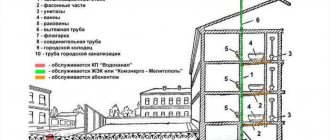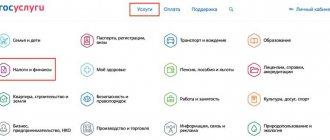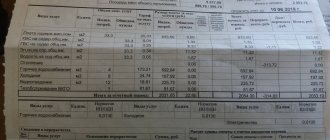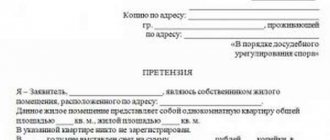Hot water supply (DHW).
Hot water supply (DHW) is a round-the-clock supply of hot water to the consumer of appropriate quality, supplied in the required volumes through the connected network to the residential premises.
Requirements (standards) for the quality of hot water are determined by Russian Government Decree No. 354:
- The temperature of hot water at the point of analysis must be at least 60 degrees. (for open centralized heating systems, not less than 50 degrees; for closed systems, not more than 75 degrees)
- The total hot water shutdown time is 8 hours (total) for 1 month
- The total time of DHW shutdown is 4 hours at a time, in case of an accident on a dead-end main - 24 hours.
- The maximum period for carrying out preventive work in the summer season is 14 days.
- The composition of water must necessarily comply with sanitary standards SanPiN 2.1.4.2496-09
- The permissible deviation in the temperature of hot water at the point of water collection at night (from 0.00 to 5.00 hours) is no more than 5 °C
- The permissible deviation in the temperature of hot water at the point of water collection during the daytime (from 5.00 to 00.00 hours) is no more than 3 °C
- Pressure in the hot water supply system at the point of analysis - from 0.03 MPa (0.3 kgf/sq. cm) to 0.45 MPa (4.5 kgf/sq. cm)
For every 3 °C deviation from the permissible deviations in hot water temperature, the amount of payment for utility services for the billing period in which the specified deviation occurred is reduced by 0.1 percent of the payment amount. For each hour of supply of hot water, the temperature of which at the point of collection is below 40 °C, in total during the billing period, payment for consumed water is made at the tariff for cold water.
If the pressure differs from the established one by no more than 25 percent, the amount of payment for utility services for the specified billing period is reduced by 0.1 percent of the payment amount. If the pressure differs from the established one by more than 25 percent, the amount of payment for utility services is reduced by the amount of the fee calculated in total for each day the utility service is provided of inadequate quality.
Types of DHW systems:
- Central. Water is heated at thermal substations (CHS) and from them, using pipelines, it is supplied to consumers.
- Autonomous. To achieve the required temperature conditions, special heating devices are installed - boilers, storage boilers or geysers. This type of DHW organization is intended for a small area of the premises - an apartment or a house.
Designations (decoding) in housing and communal services receipts:
- DHW KPU - hot water is metered using an apartment meter
- DHW DPU - hot water is metered using a common household meter
- ODPU DHW - a common household hot water meter
Calculation of the amount of payment for utility services for hot water supply is carried out according to:
- General house metering devices and depends on the number of residents registered in the apartment
- Apartment metering devices (hot water meters)
What is HVS KPU.
These letters should be understood as hot water metering, implemented using an apartment meter. In this article, the topic raised will be discussed in particular detail.
Understanding cold water metering
The legislator has established mandatory payments for citizens of the Russian Federation for the use of utility services. Continuous cold water supply (CWS) stands for continuous supply of a resource of appropriate quality to Russian citizens for use in everyday life. The state provides for the norm for each consumer and the delivery of water through the municipal system or to special pumps. Accounting for cold water must be carried out in the following ways:
- fixing a specific consumer norm for each person registered in a residential premises;
- providing any housing with a special meter.
The counter (KPU) measures the amount of cold water used per month, after which the data is transferred to the person who provides the service.
Important! A special designation “DPU” will appear in the payment, which indicates the obligatory amount for the use of cold water supply using a home meter.
In the absence of a meter, the determined consumption is calculated from general indicators. This option is not entirely profitable, since thrifty people will have to overpay for the service. The data from the residential premises is taken as a basis.
Existing tariffs
Below is a table that includes tariffs in force in the first half of 2021 in the territory of the constituent entity of the Russian Federation, Moscow, with the exception of two administrative districts belonging to New Moscow (Novomoskovsky and Troitsky).
| Consumer categories | Cold water | Water disposal |
| Population (data include VAT) | 35,40 | 25,12 |
| Other consumers (data are provided without VAT) | 30,00 | 21,29 |
| Enterprises in the field of water supply and sewerage related to the Moscow region to the extent that they fulfill obligations in Moscow | 22,81 | 19,08 |
KPU designation on the receipt
Individuals receive utility bills based on their needs. People are not always fluent in the symbols. Cold water in receipts is no exception.
What is cold water for domestic hot water in the receipt? The following abbreviations are generally used on receipts:
- HVS DPU (deciphering is given above);
- Cold water supply for hot water supply - the so-called supply of cold water for the possibility of using hot water supply. Everything is simple - heating occurs;
- DHW DPU - the amount of water used during the use of hot water supply.
In addition to water supply, utility companies provide wastewater services to people. The latter term should be understood as disposal of used water using sewerage. For this service, special buildings are equipped to process streams of all types. There are three lead designs:
- general. It has only one network for withdrawing all funds;
- separate. Such a system is classified into complete and incomplete.
The first has two closed networks that output resources. The other is for rain accumulations—a half-split drainage design. Divided into household and rainwater. If the networks intersect, then fencing structures are installed to rid the reservoir of excess inflows during rain.
Important! Therefore, the receipts contain a separate item under which fees for services are charged. This is an extremely necessary point in the document. The incredible amount of resource used must be processed before being released into waterways.
Water disposal is calculated as follows:
- First, the needs for time are formed; when specifying data, one should proceed from the results of water consumption per apartment. Reading results may vary by region;
- Some homes may need to use a common household meter. If there is no measuring device, the amount is calculated according to fixed standards.
Consumer protection is equally important. Usually, receipts have lines for water heating in order not to overpay for heating. Pay attention to this. It is possible to create an additional line in a receipt of the established form only if the position of the owner of the premises is agreed upon.
How are heat supply abbreviations deciphered in 2021?
CPU
The receipt that you received may contain a phrase such as “water drainage system KPU” or, if you pay for water supply, “HVS KPU” / “DHW KPU”.
- In the first case, it means draining all wastewater.
In this case, the total amount of hot and cold water spent for general house needs goes down the drain. Payment is made not only for the sewerage system itself, but also for the drainage, disposal, transportation and further purification of consumed water. - In the second case, water supply means the direct supply of water to the apartment.
This service includes:
- continuous heating of hot water;
- disinfection by cold, after which it becomes suitable for drinking.
IPU (individual metering devices)
These technical means are designed to calculate the resources consumed in a single apartment, i.e. the tenant himself can regulate expenses and fees for them.
There are two methods of accounting for expenses:
- collective;
- individual (using IPU).
- In the first case, a common meter is installed for the entire house, and its readings are divided in equal shares between the number of residents registered in this house. In this situation, people must pay their share regardless of whether they are at home or not during this period.
- In the second case, meters are installed in each apartment and people pay only for what they actually used for a certain period. This method is considered the most effective and fair for calculating consumed resources (how to calculate the cost of heating per 1 sq. m in 2019?).
ODN (general house needs)
Utilities of one building are resources that are used in the process of maintaining and operating common property in an apartment building.
According to the Decree of the Government of the Russian Federation dated May 6, 2011 No. 354 “On the procedure for providing utility services to owners and users of premises in apartment buildings and residential buildings,” all residents of apartment buildings without exception are required to pay for these services.
What are the ODN services for which residents will be charged? Here's a short list:
- water, gas, heat supply to non-residential premises owned by an apartment building;
- cleaning these premises;
- improvement of adjacent territories;
- ensuring the operation of the elevator, intercom, video surveillance system, installation of a common antenna;
- heating and lighting of common property (how are heating fees determined in Russia?).
In addition, Article 36 of the Housing Code of the Russian Federation establishes a list of common property in apartment buildings. It includes:
- elevators and elevator shafts;
- corridors;
- attics and basements;
- roofs;
- stairs and landings;
- premises designed to satisfy social and other needs (shops, sections, etc.);
- equipment belonging to the home.
GCAL
This abbreviation stands for a unit of measurement of consumed resources - gigacalorie.
Here are the values from which Gcal is derived : 1 gigaCal (Gcal) = 1000 Mcal = 1000000 kcal = 1000000000 Cal.
Now, when you see this abbreviation on your utility bill, you can easily understand that this is the amount of resources that you have used and that you should pay for a certain period of time.
ODPU / DPU
This abbreviation hides communal and household metering devices. Despite the fact that there are many different meters, such as IPU or KPU, general house metering devices are necessary in apartment buildings. The thing is that in the absence of ODPU, each apartment will have to install at least 4 different types of meters (for electricity, heat, water and gas) or residents will have to overpay.
The installation of such a meter is mandatory for all apartment buildings in accordance with Federal Law No. 261, which was issued back in 2009. However, despite the fact that the law mandated that installations be completed by 2012, many homes have still not done so.
The heating season in the central part of the Russian Federation lasts about 6 months a year, but receipts for the provision of heat energy services are sent monthly. Why do you pay for heating in the summer, what consequences can debt lead to, why the standard depends on the number of floors, as well as how to adjust the payment in 2021, the tariff will change from 2020, conclude a heat supply agreement - read on our Internet portal.
Relationship between DHW and cold water
According to current standards and documents, hot water supply (hot water supply) must be supplied to all populated areas with temperatures up to 75 ° C. The resource is constantly provided to people. Heating points can switch to a more relaxed (summer) mode. Hot water enters the city hot water system and is subsequently distributed to residential premises.
Important! Heating companies produce hot water by heating purchased hot water. As a result, an item such as heating appears on payment receipts. In this case, the data from the common house meter for hot water consumed is taken into account. It is necessary to configure the metering devices correctly by entering the name of the service.
For complex heating of apartment buildings, you should pay for utilities. Some abbreviations are quite simple to decipher. To know what you're paying for, check online or contact your utility company for more details.
What is in the receipt of hvs kpu.
Absence of debt for housing and communal services, when applying to the relevant authorities with an application for a state subsidy, you must provide paid receipts for the last month. If you have rent arrears, it is impossible to receive government support. To do this, you will first have to pay off the bills. Confirmation of the income of all family members. When calculating the subsidy, the total family income of all family members living in the apartment is taken into account. If someone does not work or cannot officially confirm their income, it is impossible to receive a utility subsidy
How to file a complaint if a payment receipt was calculated incorrectly
Typically, housing and communal services settlement departments distribute the amounts spent on repairs of a common house water heating device among the residents registered in the house. At the same time, the presence of an autonomous system in some apartments is not always taken into account. As a result, their owners are required to pay for the maintenance of devices that they do not use at all.
Sometimes you receive receipts with increased tariffs. In such circumstances, you must contact the management company. It is recommended to visit its settlement branch or write a letter asking for clarification of the accrual of certain amounts. If there are no explanations, you must submit a claim to the Criminal Code or its legal department. A written response must be received within a month. If the management organization reveals the fact of an erroneous calculation, a recalculation must be carried out. Based on the latter, the user will receive compensation for the overpayment.
Advice! When management companies do not respond to a submitted claim for a long time, it is recommended to file a lawsuit. When writing a statement, it is important to describe in detail the essence of the violation and put forward your demands. When preparing a document, you must refer to current legislation.
The legality of charging utility bills for DHW heating can be challenged in the prosecutor's office. You can also contact the structures that control the work of the management company, write a complaint to the Ministry of Construction, Rospotrebnadzor, FAS, and housing inspections.
If, after independently calculating the amount of contributions for hot water supply, a difference is identified, and the organization’s employees refuse to give explanations about this, you must submit a written claim to the Criminal Code Source iurist.info
Water disposal kpu in the receipt what is it
- There are no metering devices for water discharged into the sewer system that could separately calculate how much is spent on general household needs. Therefore, this column can indicate almost any values that will be convenient for the service provider, since the end consumer will not be able to verify or refute them;
- laws do not contain this wording. What payments the management company can demand from people is prescribed by law. Therefore, all correct columns contain the entry “common house” or “common.” metering devices. You can actually check them and compare the charged fee with the real values.
Thermal energy component
You only need to pay for hot water if the supply system is open. If there is a water heater in the house, residents consume more gas. Consequently, they receive payment specifically for this resource.
Thermal energy for DHW needs is calculated using a formula taking into account the following factors:
- current tariff;
- consumption of resources for heating water;
- heat loss coefficient.
That is, consumers themselves, not suppliers, pay for the loss of heat that inevitably occurs during the passage of boiling water through pipes.
This is what the component for thermal energy in DHW is. This is compensation for water heating, which is carried out by utilities.
What is KPU drainage
If your water heater fails, your hot water bill will not increase. In this case, authorized employees of the management organization are required to repair the equipment urgently. But since repairs require payment, residents must still pay this amount. Although the heating bill will remain the same, the cost of repairs and maintenance of the property will increase. This is explained by the fact that water heating devices are part of the property of homeowners.









